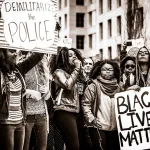Who’s Setting Your DEI Pace? Part II: An Interview with Principal Angela Sheffey-Bogan
Angela Sheffey-Bogan is a veteran public school educator and Principal of Sartori Elementary School, an innovative STEM school in Renton. Sartori is Angela’s pride and joy and she takes very seriously her responsibility and privilege to teach a student body composed predominantly of low-income students of color.


